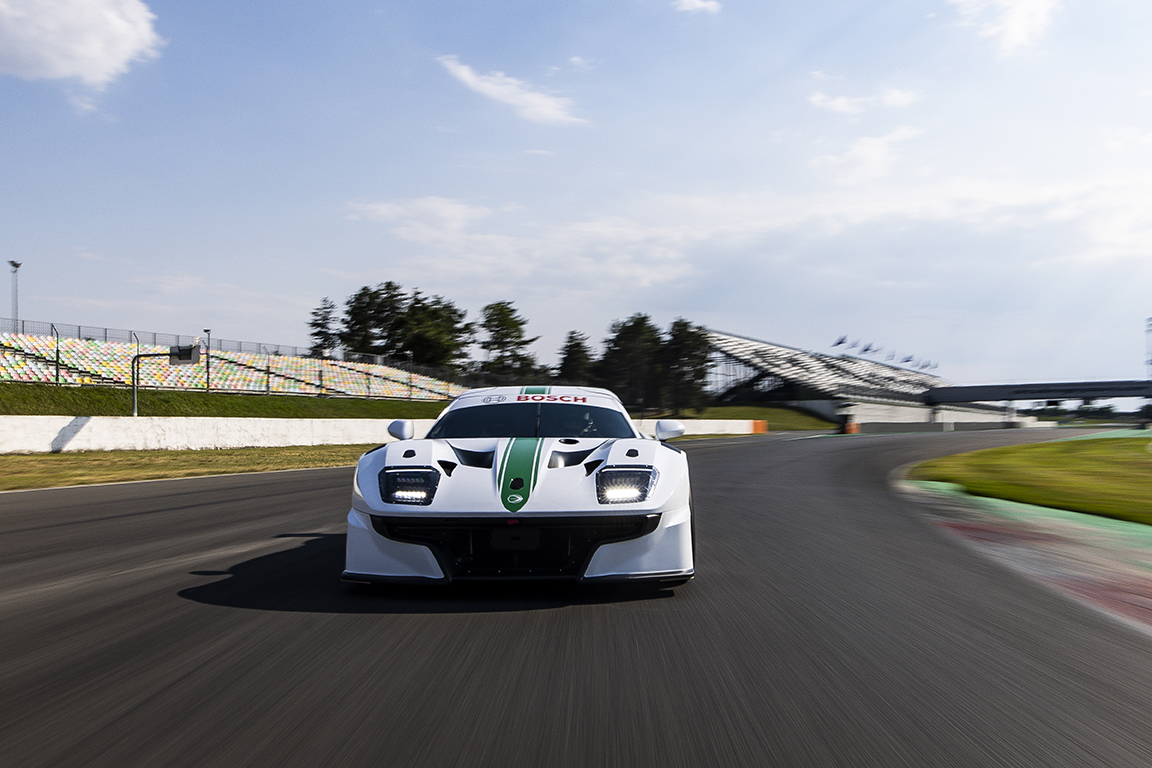
New energies : Ligier steps up a gear
From hydrogen gas to liquid hydrogen and synthetic fuels, the French manufacturer is working on all fronts to prepare for the motorsport of tomorrow. The aim is clear: to be a forerunner in the field of new energies to ensure the future of motorsport and of the French brand.
Interview with the two figureheads of green innovation at Ligier Automotive, Richard Tur, COO and Julien Jehanne, Director of the Amilly site specialising in concept cars and special vehicles.
1. Do you see the Ligier JS2 RH2 as a beginning or a culmination in the development of Ligier Automotive?
Richard Tur: “First of all, it's a beginning, our first major project in new energies. We worked in total synergy with Bosch Engineering. This project has enabled us to rapidly gain in expertise and credibility by offering, within a tight timeframe, much more than a demonstrator, a real race car ready to run. In that respect, it's also a great achievement.”
Julien Jehanne: “From a technical point of view, we have developed a maximum amount of knowledge and skills in a very short space of time. The Ligier JS2 RH2 has enabled us to take the plunge and tackle the subject of new energies head on.”
2. Have you worked on other hydrogen-powered vehicles?
Richard Tur: “In the wake of the Ligier JS2 RH2, we were lucky enough to work for Alpine on the Alpenglow. We started from the basis of our LMP3 sports prototype.
“This is one of our strengths at Ligier Automotive. Our Ligier racing cars cover the whole spectrum of motorsport: from single-seaters to sports prototypes (up to LMDh), and GT. This allows us to respond quickly to requests for concept cars and special vehicles, because we can draw on what we already know, so that we don't have to start from scratch to integrate new technologies or energies into a demonstration vehicle".
Julien Jehanne: “With the Alpenglow, we worked on the design of the hydrogen circuit, the “hardware”, the storage of hydrogen and its cooling, as well as the integration of these different elements into the LMP3 base.”
3. In February 2024, the FIA announced its preference for liquid hydrogen in motorsport. What impact did this announcement have on Ligier projects?
Richard Tur: “While we are continuing to monitor evolutions on gaseous hydrogen, as soon as this announcement was made, we launched studies into solutions for integrating liquid hydrogen into competition vehicles. We hope to be able to offer a liquid hydrogen demonstrator in the near future.
“This is certainly an ambitious goal, but to meet our customers' ambitious projects and the expectations of tomorrow's motorsport, we need to be ambitious. We want to position ourselves as a forerunner in the use and integration of new energies.
"We are architects. And our expertise as a former racing team, chassis and engine manufacturer, and electronics specialist gives us an insight into all the essential elements of a racing car. Today, we're moving our pawns forward and putting the pieces of the jigsaw together. Liquid hydrogen raises a number of technological challenges that we are ready to meet.”
Julien Jehanne: “We have launched design studies on liquid hydrogen storage and distribution. Liquid hydrogen is mainly used in industry for static applications or in aerospace. One of the critical elements for integrating liquid hydrogen is cryogenic pumping. The conditions of use and integration on board a racing car are very restrictive and require the development of innovative solutions, on which we are actively working. There are currently no off-the-shelf solutions for liquid hydrogen.
"We consulted a number of suppliers and mapped out the technical solutions to be implemented. With our machining and mechanical welding capacity at Magny-Cours and Amilly, we are not ruling out the possibility of manufacturing certain key components of the system in-house and offering them in small series to other manufacturers.”
4. Are you working on other areas of development?
Julien Jehanne: “We are making progress with our partners on alternative storage solutions. High pressure (700bars) is currently the main obstacle to integrating gaseous hydrogen in competition vehicles.
"We have also launched several testing to validate the use of synthetic fuels in our Ligier vehicles in particular.”
Richard Tur: “We're not ruling anything out and we're concerned about the future of motorsport. It's important for us to have a long-term vision and to secure our place as a player in the motorsport of tomorrow.”